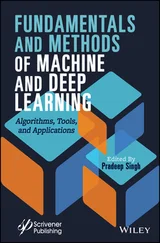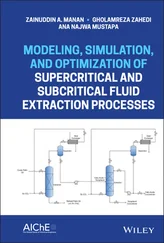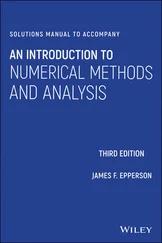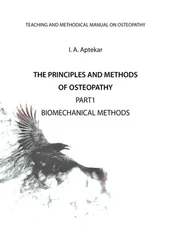1 Cover
2 Title Page SCIENCES Statistics , Field Director – Nikolaos Limnios and Kerrie Mengersen Geostatistics
3 Copyright First published 2021 in Great Britain and the United States by ISTE Ltd and John Wiley & Sons, Inc. Apart from any fair dealing for the purposes of research or private study, or criticism or review, as permitted under the Copyright, Designs and Patents Act 1988, this publication may only be reproduced, stored or transmitted, in any form or by any means, with the prior permission in writing of the publishers, or in the case of reprographic reproduction in accordance with the terms and licenses issued by the CLA. Enquiries concerning reproduction outside these terms should be sent to the publishers at the undermentioned address: ISTE Ltd 27-37 St George’s Road London SW19 4EU UK www.iste.co.uk John Wiley & Sons, Inc. 111 River Street Hoboken, NJ 07030 USA www.wiley.com © ISTE Ltd 2021 The rights of Nikolaos Limnios, Eleftheria Papadimitriou and George Tsaklidis to be identified as the authors of this work have been asserted by them in accordance with the Copyright, Designs and Patents Act 1988. Library of Congress Control Number: 2020950512 British Library Cataloguing-in-Publication Data A CIP record for this book is available from the British Library ISBN 978-1-78945-037-8 ERC code: PE1 Mathematics PE1_13 ProbabilityPE1_14 Statistics PE1_20 Application of mathematics in sciences PE10 Earth System Science PE10_7 Physics of earth’s interior, seismology, volcanology
4 Preface
5 1 Kernel Density Estimation in Seismology
1.1. Introduction 1.2. Complexity of magnitude distribution 1.3. Kernel estimation of magnitude distribution 1.4. Implications for hazard assessments 1.5. Interval estimation of magnitude CDF and related hazard parameters 1.6. Transformation to equivalent dimensions 1.7. References
6 2 Earthquake Simulators Development and Application 2.1. Introduction 2.2. Development of earthquake simulators in the seismological literature 2.3. Conceptual evolution of a physics-based earthquake simulator 2.4. Application of the last version of the simulator to the Nankai mega-thrust fault system 2.5. Appendix 1: Relations among source parameters adopted in the simulation model 2.6. Appendix 2: Outline of the simulation program 2.7. References
7 3 Statistical Laws of Post-seismic Activity 3.1. Introduction 3.2. Earthquake productivity 3.3. Time-dependent distribution of the largest aftershock magnitude 3.4. The distribution of the hazardous period 3.5. Conclusion 3.6. References
8 4 Explaining Foreshock and the Båth Law Using a Generic Earthquake Clustering Model 4.1. Introduction 4.2. Theories related to foreshock probability and the Båth law under the assumptions of the ETAS model 4.3. Foreshock simulations based on the ETAS model 4.4. Simulation of the Båth law based on the ETAS model 4.5. Conclusion 4.6. Acknowledgments 4.7. References
9 5 The Genesis of Aftershocks in Spring Slider Models 5.1. Introduction 5.2. The rate-and-state equation 5.3. The Dieterich model 5.4. The mechanics of afterslip 5.5. The two-block model 5.6. Conclusion 5.7. References
10 6 Markov Regression Models for Time Series of Earthquake Counts 6.1. Introduction 6.2. Markov regression HMMs: definition and notation 6.3. Application 6.4. Conclusion 6.5. Acknowledgments 6.6. References
11 7 Scaling Properties, Multifractality and Range of Correlations in Earthquake Time Series: Are Earthquakes Random? 7.1. Introduction 7.2. The range of correlations in earthquake time series 7.3. Scaling properties of earthquake time series 7.4. Fractal and multifractal structures 7.5. Discussion and conclusions 7.6. References
12 8 Self-correcting Models in Seismology: Possible Coupling Among Seismic Areas 8.1. Introduction 8.2. Review of applications 8.3. Formulation of the models 8.4. Applications 8.5. Conclusion 8.6. References
13 9 Markovian Arrival Processes for Earthquake Clustering Analysis 9.1. Introduction 9.2. State of the art 9.3. Markovian Arrival Process 9.4. Methodology and results 9.5. Conclusion 9.6. References
14 10 Change Point Detection Techniques on Seismicity Models 10.1. Introduction 10.2. The change point framework 10.3. Changes in a Poisson process 10.4. Changes in the Epidemic Type Aftershock Sequence model 10.5. Changes in the Gutenberg–Richter law 10.6. ZMAP 10.7. Other statistical tests 10.8. Detection of changes without hypothesis testing 10.9. Discussion and conclusion 10.10. References
15 11 Semi-Markov Processes for Earthquake Forecast 11.1. Introduction 11.2. Semi-Markov processes – preliminaries 11.3. Transition probabilities and earthquake occurrence 11.4. Semi-Markov transition matrix 11.5. Illustrative example 11.6. References
16 List of Authors
17 Index
18 End User License Agreement
1 Chapter 1 Figure 1.1. Buildup of the kernel estimate of PDF. Normal kernel functions (thic... Figure 1.2. The dependence of density estimate on bandwidth, h. The actual distr... Figure 1.3. Left – PDF with two modes. Right – PDF with two bumps. Reprinted fro... Figure 1.4. Comparison of the estimates obtained from the kernel estimation meth... Figure 1.5. “Kernel” (circles) and “exponential” (squares) estimates of the mean... Figure 1.6. Example of interval kernel estimation of CDF and related hazard para... Figure 1.7. An example of the transformation to equivalent dimensions. The first... Figure 1.8. Changes in time of the total distance to centroid of the groups of 1...
2 Chapter 2 Figure 2.1. Three examples of slider-block models of the earthquake process, fro... Figure 2.2. Recurrence-time distributions from three different physics-based ear... Figure 2.3. Flow chart of the computer code for earthquake simulation adopted in... Figure 2.4. Scheme of rupture nucleation and propagation adopted in this earthqu... Figure 2.5. Frequency-magnitude distribution of the earthquakes in the synthetic... Figure 2.6. Space-time features of synthetic catalogs concerning earthquakes wit... Figure 2.7. Interevent time distribution from a simulation of 100,000 years of s... Figure 2.8. a) Magnitude-frequency distribution of the earthquakes in the synthe... Figure 2.9. Cumulative magnitude-frequency distribution of the earthquakes in th... Figure 2.10. Stacked number of M3.0+ events in the 500 years period before and a... Figure 2.11. Probability (%) of exceedance of PGA = 0.2 g in 50 years in the Cal... Figure 2.12. Map of ruptures for M ≥ 6.0 earthquakes on the joint set of three f... Figure 2.13. Flow chart of the computer code for earthquake simulation with rate... Figure 2.14. Simplified model of the Nankai mega-thrust. The seismogenic structu... Figure 2.15. Frequency magnitude distribution of the 2,000 years synthetic catal... Figure 2.16. Interevent time distribution from a simulation of 2,000 years of se... Figure 2.17. Stress time history on the Nankai seismogenic structure for the fir... Figure 2.18. (a) The time history (in a normalized scale) of the average stress ...
3 Chapter 3Figure 3.1. Determining the threshold η 0 for the proximity function η using the ...Figure 3.2. The earthquake productivity based on the ANSS ComCat catalog. Circle...Figure 3.3. Earthquake productivity is dependent on magnitude range as inferred ...Figure 3.4. The mean number of initiated earthquakes with relative magnitude Δ M ...Figure 3.5. The distribution of the number of earthquakes initiated by triggerin...Figure 3.6. Determining the distribution of earthquake productivity using the al...Figure 3.7. The productivity distribution for M ≥ 6.5 earthquakes based on the g...Figure 3.8. Earthquake productivity based on regional catalog data. (a) The dist...Figure 3.9. Productivity distribution in relation to the threshold value of η 0: ...Figure 3.10. Comparing the observed and theoretical mean magnitude differences b...Figure 3.11. The parameter Λ2 as a function of depth of focus for aftershock seq...Figure 3.12. The estimates of c in the Omori–Utsu law in relation to mainshock d...Figure 3.13. The parameter p in relation to depth of focus for aftershock sequen...Figure 3.14. Empirical and theoretical distribution functions for the duration o...
Читать дальше












